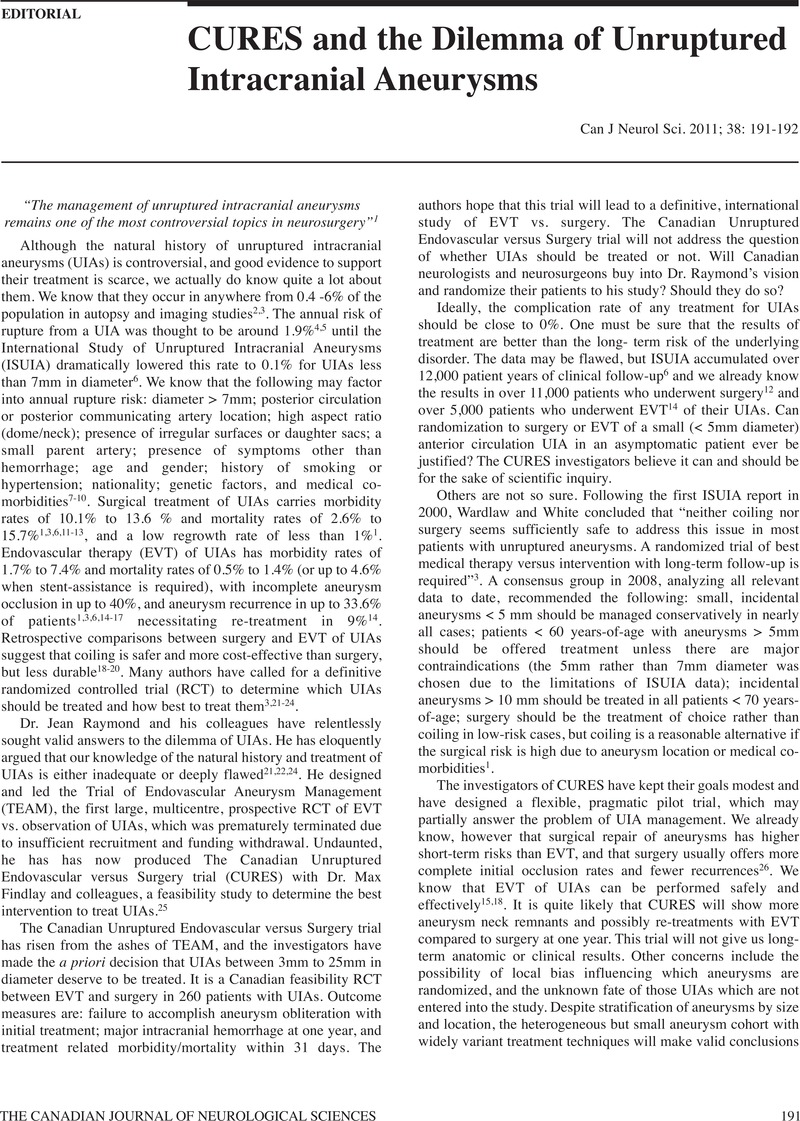Crossref Citations
This article has been cited by the following publications. This list is generated based on data provided by Crossref.
Darsaut, Tim E.
Raymond, Jean
and
Findlay, J. Max
2011.
More Than ‘Answers We Can Use’, We Need to Ask the Right Questions.
Canadian Journal of Neurological Sciences / Journal Canadien des Sciences Neurologiques,
Vol. 38,
Issue. 5,
p.
785.
Brown, Robert D.
and
Torner, James
2011.
Unruptured Intracranial Aneurysms: Some Questions Answered, Many Questions Remain.
Canadian Journal of Neurological Sciences / Journal Canadien des Sciences Neurologiques,
Vol. 38,
Issue. 5,
p.
785.
Mohamed Rafi, K
and
Periyakappan, AL
2024.
Fourteen intracranial aneurysms in a single patient—the largest number ever reported in the literature.
IP Journal of Nutrition, Metabolism and Health Science,
Vol. 6,
Issue. 4,
p.
194.



